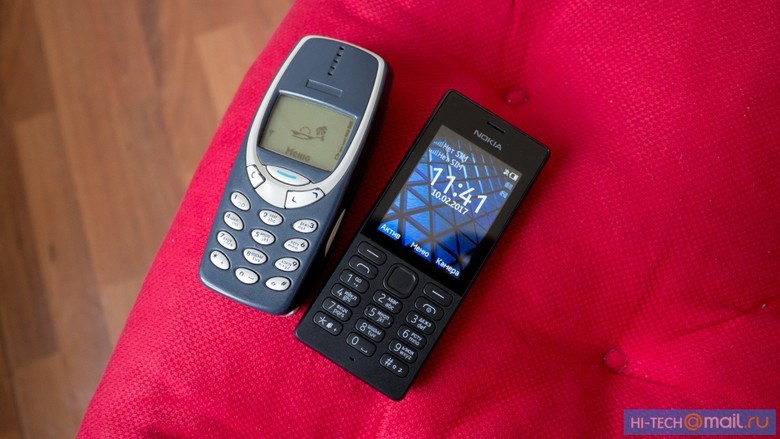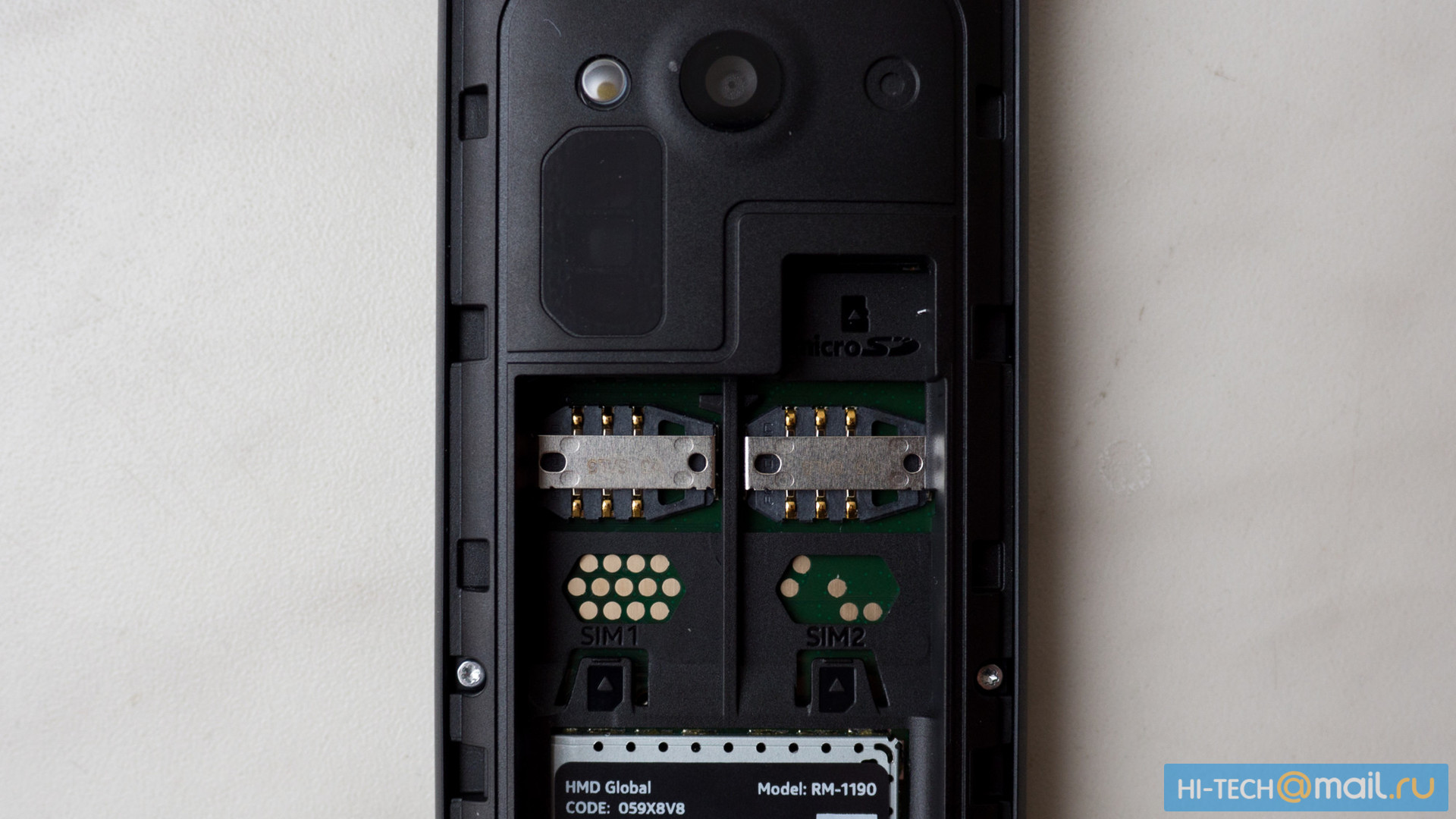Nokia 150: ideological successor to the Nokia 3310

In 2000, Nokia released a simple and even for those times cheap Nokia 3310, which went down in history as one of the most "unkillable" mobile phones and perhaps the most successful product of the company. And 16 years later, Nokia took a strange step: it released a push-button phone, which is intended to become the ideological successor to the legendary old woman 3310. Did it work out?
For those who were too young to remember the gadgets of 2000: before the first iPhone, which formed our current concept of the smartphone, there were still 7 years left. In the world of
It was a time when phones became more compact, got rid of sticking antennas, new functions appeared. Oh yeah, do you remember how you could buy replaceable cases for phones at every corner? For a small amount, it was possible to completely (!) Update the appearance of your worn device, including a protective screen cover and keyboard. At the same time, the range of colors and patterns of interchangeable panels could satisfy any, even the most perverted needs. And what can you say about the current “progress” when we are forced to shake over our gadgets, carefully wrapping them in all kinds of covers, hopelessly distorting their proportions and our tactile sensations. And on the protection of fragile glass has grown an entire industry, we recently learned even about liquid glass to protect smartphones . I don’t know about you, but I really miss the time when you could buy a new panel in a stall for a small amount, and your phone again looked like new, and you could change the color to your mood. And all this without distortions in the form of bumpers, silicone covers and films on the screen.
')
The Nokia 3310 was fully in line with market trends: it was a phone without a sticking antenna, with a smooth body shape, a monochrome display, and a much more original design compared to modern faceless smartphone tiles, which by billions stamped on one face. It was also experienced that it quickly became clear that the novelty is very durable and manages to survive in the most difficult situations, for which it quickly gained people's love and became one of the iconic Nokia models . In fact, the Nokia 3310 has become an analogue of the Kalashnikov assault rifle on the handset market: reliability, unpretentiousness, relative cheapness and huge production volumes.
One and a half weave
And now, 16 years later, the
The design of the 150th is in the spirit of the times: an angular brick of black or white color. The novelty is almost twice as light - 81 grams versus 133. Width and length are comparable to 3310, but the thickness is much less. The assembly is much better than its predecessor. Also at the 150th color display.


Unfortunately, the test sample could not be verified using the crash test method, so I can’t say anything about physical reliability. However, a week of barbaric (by the standards of modern smartphones) carrying in a backpack and pockets with keys and other abrasive items, after careless throwing on the tables, scuffs and scratches did not appear.
Fortunately, the times of proprietary charging connectors are long past: the Nokia 150 is equipped with a standard micro USB. You can insert two SIM cards into a new mobile phone, but for this you have to remove the battery. At the same time, Sims are full-sized, which many have already somehow lost the habit of.
Nokia 150 has acquired other features that were not in the 3310: a flashlight, headphone jack, Bluetooth and a camera. True, the camera would not have been better - the 0.3-megapixel matrix is a cynical mockery by today's standards. The quality of the pictures is as if the lens was made from a piece of box for a CD in an underground Chinese factory.
Today, mobile phones are greeted on the display and escorted to it. The Nokia 150 is equipped with a cool TFT-display with a diagonal of 2.4 inches and a resolution of 240x320 pixels. Undoubtedly, a significant step forward compared to the monochrome 84x48 pixels in 3310.
Significant progress in software is also noticeable. What do we have fun on the road? Naturally, games on the phone. There were four of them in the Nokia 3310 (these Google Play and AppStore haven't come up yet). And one of the games is no less legendary than the phone itself - the “snake”. Fortunately, the developers made it a facelift, duck interface and transferred to the Nokia 150 called Snake Xenzia. The other three games have sunk into the story, but they screwed up paid (!) Car races.
Another excursion into the past: in 2000, in parallel with the Nokia 3310, the world's first cell phone appeared with the ability to install a memory card - Siemens SL45. He supported MMC cards of 32 MB. And in the Nokia 3310 there was only a built-in memory of 1 KB (one kilobyte). Just got 4 games, an alarm clock and a calculator. In this case, all contacts were recorded on the "SIM". The Nokia 150 with memory is also not thick, but you can insert an SD card up to 32 GB. At last civilization has come!


Nokia 3310 came with two batteries - NiMH and Li-ion. Nickel-metal hydride lived for a couple of years, and then they had to be changed due to the degradation of capacity. Lithium-ion batteries had a capacity of 900 mAh, and that was enough to charge the phone about once every 4-5 days.

In Nokia 150, the battery has grown quite a bit, up to 1020 mAh, but the manufacturer claims that this is enough for 22 hours of talk time (instead of 4 for 3310).

As mentioned above, the 3310 was a harsh phone for serious people - a minimum of applications, nothing superfluous. In Nokia 150, the developers have given their will: here you have the Photo, Video, Music, Calendar, and even FM radio applications. But the volume of the new call was much weaker than its predecessor. However, this is partly offset by a stronger vibrating alert in the Nokia 150.

Surprisingly, the Nokia 150 is cheaper than the Nokia 3310. The latter in 2000 cost about 4,000 rubles. ($ 130-140). And the 150th is now sold for about 2500 rubles. But, of course, it is impossible to compare head-on, because for so many years the purchasing power of both the ruble and the dollar has greatly changed. 16 years ago, the official average salary in Russia was 2,300 rubles. In 2016, it was 36,000 rubles. So, on the 3310th it was necessary to save for several months, as it is now saved on a new iPhone, and the 150th will make a much smaller hole in the budget.
Someone will be surprised, but today push-button phones are still in demand: they are cheap, unpretentious, much more resistant to shocks and falls, and the ability to lie for almost a month without recharging is generally indispensable for those who have a long time apart from civilization. At the same time, the successor to the 3310th boasts a color display, a memory card, two SIM cards and a set of entertainment applications. What else do you need for a budget phone?
Source: https://habr.com/ru/post/373179/
All Articles